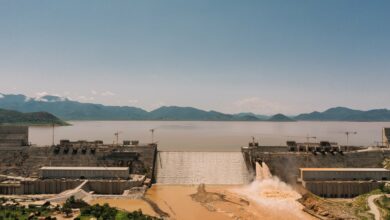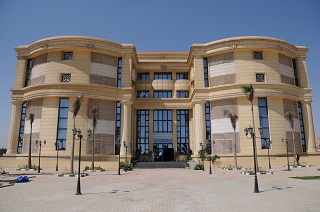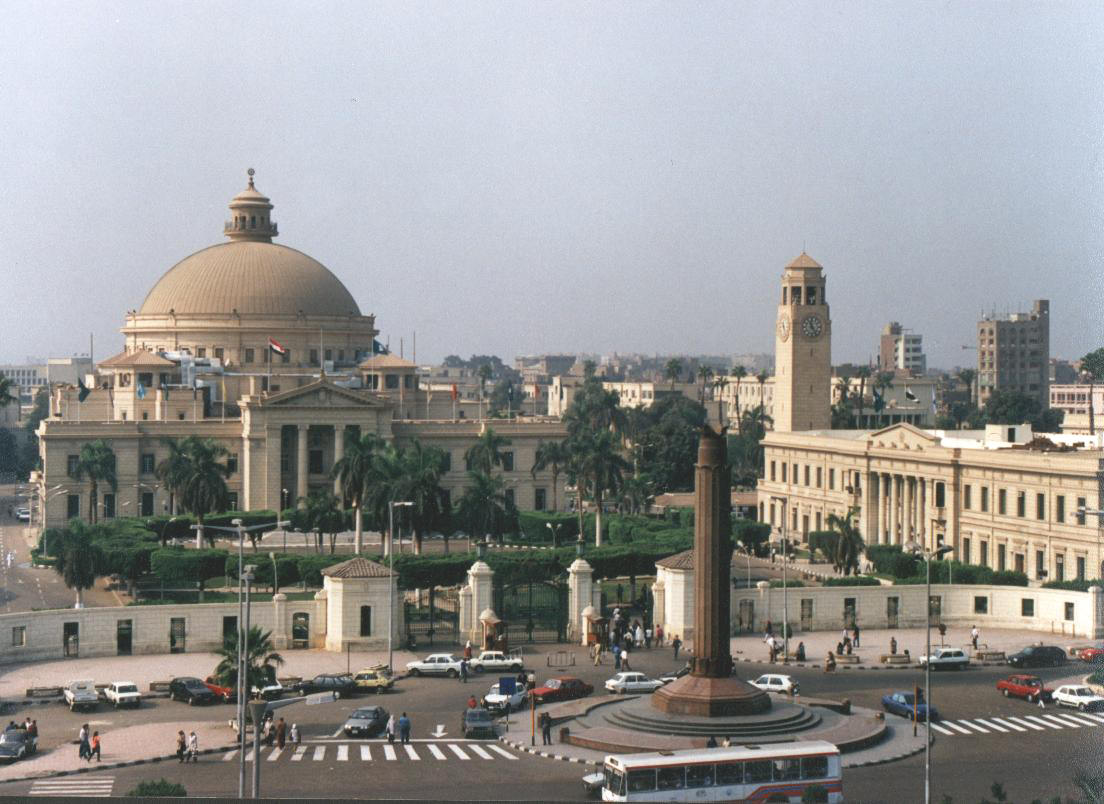Many of us have spoken and thought of those we wished were present to witness — and perhaps participate in — the Arab revolutions. People we have known and loved, and people we have known from a distance. A woman stood up at the “Narrating the Arab Spring” conference simply to say she would have loved it if Edward Said were here, to hear and read what he had to say “about what is his revolution also.” It was a moving moment — the room broke into applause.
Organized by the English department at Cairo University in collaboration with the Center for the Advanced Study of the Arab World and the Women and Memory Forum, the conference took place between 18 and 20 February at Cairo University. Several threads wove through the dozens of papers given over several parallel sessions, covering a range of issues and questions.
Here Egypt Independent brings together a few threads that we thought were particularly pertinent.
I. The permission to narrate: Who speaks?
The reference to Said brought up some of the questions that hover around narrating the revolution. Because Said is not here, it does not make the revolution any less “his.” The contributions “before” the revolution are actually part of it. And for those who are no longer with us, who is to narrate their stories? Who speaks in the name of the martyrs who cannot narrate for themselves? Is speaking in the name of martyrs a real possibility, or a kind of violence?
The mention of Said evokes his seminal essay “The Permission to Narrate.” Writer Jean Makdisi spoke about the possibility of stealing narratives; positioning herself as both inside and outside, she posed the question of whether only participants can narrate, or if others can add something. The post-Mubarak scene in Egypt is in part characterized by a plethora of voices speaking in the name of the revolution. The sight of regime figures evoking the revolution, or of those who sycophantically apologized for the regime now sycophantically evoking the revolution, is nauseating, and many have said so. It is not simply stealing a narrative, but stealing a revolution. But in the cacophony of voices, what about the voices we do not hear? Few addressed this question. Those who represent the revolution, diverse as they may be ideologically, do not reflect the diversity of those who participated and continue to participate. This is unsurprising, and perhaps inevitable given the differential access not to speaking, but to being heard, in an unequal society. But if we espouse the goals of the revolution, we must do more than note the stealing of narratives and the fact that there are voices we do not hear.
II. The flags of the Arab world
The picture accompanying the conference was of masses of people, presumably in Tahrir Square. The picture the organizers chose for the cover of the program was different: masses of people at a demonstration holding several Arab flags stitched together. The "Arab" in the conference's title and the pan-Arab gesture of the photo pointed to a desire for analysis and thinking that draws connections between the revolutions, uprisings, repression and resistance that are occurring in several Arab countries. Given the location of the conference, it was perhaps unsurprising that it was heavily Egypt-centric, and the potential for drawing connections across and between Arab countries was lost.
There were several papers on social media and the power of the image, but several questions remained unexplored. There is a narrative of the revolution as a revolution for freedom. But what does this mean? Would a continuation of the same neoliberal policies and reforms fulfill a demand for freedom? Where would social justice fit into this? Would a continuation of the same relationship with the US and Israel constitute freedom — who hears those anti-imperialistic slogans chanted in demonstrations since last January? What about an analysis of the power relations “behind the scenes” and models for restructuring the police, the Interior Ministry and security forces, given that a majority of the poor do not live free from police brutality?
The title of the conference invited us to narrate or explore narrating the “Arab Spring.” Many however were unhappy with such a term. Some were happy to simply note their uneasiness and move on. Others wanted to explain their discomfort. How could what is happening in Syria and Libya be described as "spring"? Makdisi asked. Several pointed to the implications of what came before the spring, the slumber of winter, passivity out of which the revolutions sprung. And given that the upsurge of dissent is not limited to the Arab world, what global connections are cut off by the Arab of the “Arab Spring”? What about links to an international economic crisis?
III. A Cairo university desk
In the Cairo University lecture hall where I sat, distracted students had doodled and scribbled on the desk. There was a drawing of a flower, a declaration of love, some random words. There is the “UA07” of the Ahly Ultras, “25 January” and “Down with military rule.”
It was a reminder of many things. It was a reminder of the fact that we are in the midst of a revolution. In Cairo University, where the struggle also takes place, where many students are active participants in that revolution, some have lost their lives.
And in the midst of it, what is the place for theory? The question was asked explicitly and implicitly again and again. A sense that urgency somehow stands opposed to the luxury of theory. But is theory luxury or necessity? What kind of theory? What kind of intellectual? An engaged intellectual? What is engaged? Questions that are asked in all kinds of times and places, but that in this time and space have a particular urgency. Participants in the conference struggled with these questions. Some felt almost guilty for theory. For Zeinab Aboul Magd at the American University in Cairo, the solution has for the past few months been to “give up on theory.” She recognizes that theory is internalized, that it is not possible to give theory up per se, but feels that what she can offer revolutionaries is information, research, informed analysis, not theorizing. It appears that those working, researching and writing in Cairo are most troubled by the relationship between theorizing and participation, who in physical proximity to the struggle question the relevance of theory.
After novelist Radwa Ashour gave a keynote address, a participant asked whether we need distance to be able to theorize and analyze: Is it because we are too close that it is hard? Ashour's answer pointed not to physical but temporal distance. Indeed, several contributions, while interesting, did not move beyond a level of description. Those most explicitly theoretical did not offer new and fruitful avenues of theory to help us understand the current moment, or contribute to taking it forward. For instance, there was a paper about the media's treatment of Lara Logan and Mona El-Tahawy in the wake of the sexual violence they experienced, a paper that very much relied on the body of theory that has made sense of “Western” constructions of “honor killings” and other violence toward women, which often invokes Gayatri Chakravorty Spivak's “white men saving brown women from brown men.” While this was certainly interesting, it seems that the current moment calls for a different kind of theorizing. Theory that may in a sense be a luxury, but that in the current moment of urgency is all the more necessary.
IV. Young working-class man meets wealthier young woman
There are several stories that do the rounds on social media, not only from the 18 days, but also from the bloodshed since. Stories about people who are often anonymous. There is the story from the five days of fighting around Mohamed Mahmoud Street in November of a young man saying to a woman that she should stay back, he would die, while she, educated and cultured, would help rebuild the country. This story made the rounds as one of those that point to the determination and willingness to give up anything, even life, in the struggle for freedom. Ashour related it in her opening talk. Several people nodded, smiling.
As in most conferences, it is the stories in the breaks, on the way out of sessions, that are often particularly thoughtful. In those moments there were several conversations between people disturbed and frustrated by this story.
It is not the story that unsettles so much as its narration. It is not about denying agency to the young man who was willing to be a martyr if necessary, who may now indeed be a martyr — this is his right. But it is its repeated narration by middle-class activists in a way that soothes and allays our worries. One that implicitly suggests a class division of labor in the revolution as okay — “they” can die, “we” will rebuild. That suggests that however loud we call for social justice, we may not have internalized its meaning. The revolution continues to be fought on several fronts.




